Display ads are among the fundamental elements of modern digital marketing, offering businesses a strong channel for reaching and engaging with their target audience.
But with a myriad of competing ads, simply creating an ad and hoping for results will not work.
Creative content is the secret ingredient that can make your display ads stand out, grab attention, and drive meaningful engagement.
In this article, we’ll dive into the art of crafting creative content for display ads, starting with an in-depth understanding of why creative content matters and how it influences your ad’s performance.
- Understanding the Power of Creative Content in Display Ads
- How to Create Engaging Display Ad Copy
- 7 Innovative Ideas to Inspire Your Display Ads
- Best Practices for Crafting Creative Content in Display Ads
- Measuring the Success of Your Creative Content in Display Ads
- Bringing It All Together: Mastering Creative Content for Display Ads
- Frequently Asked Questions About Creative Content for Display Ads
Understanding the Power of Creative Content in Display Ads
When it comes to display ads, creative content is more than just a visually appealing design.
It’s about crafting a message that resonates with your audience, evokes emotion, and inspires action.
With today’s digital clutter, an ad can easily be overlooked, but a well-thought-out and creative ad has the potential to leave a lasting impression.
So, what makes creative content effective?
It’s the combination of several key elements working in harmony to deliver a compelling message.
Visuals, text, and layout all play crucial roles, and when executed correctly, they can transform your ads from ordinary to extraordinary.

A dynamic workspace showcasing the key elements of effective creative content.
What Makes Creative Content Effective?
Creative content is effective when it tells a story or solves a problem.
Audiences are drawn to content that feels relevant and relatable.
Ask yourself: what does your audience care about?
How can your product or service improve their lives?
Addressing these questions in your ad content helps establish an emotional connection, making your ad more memorable.
- Relevance: Ensure your content aligns with your audience’s needs and preferences.
- Clarity: Keep your message clear and concise to avoid confusion.
- Uniqueness: Highlight what makes your brand or product stand out.

Highlighting the significance of visual appeal in effective advertising.
The Role of Visual Appeal in Advertising
Visual appeal is often the first thing that captures attention in a display ad.
Humans process visuals faster than text, so it’s vital to create impactful images and design elements.
High-quality images, bold colors, and clean layouts can all contribute to making an ad visually striking.
- Use striking imagery: Photos or illustrations that grab immediate attention.
- Focus on simplicity: Avoid cluttering your ad with too many elements.
- Experiment with contrast: Use contrasting colors to emphasize key parts of your ad.

Creative content in action: driving engagement through interactive and vibrant ad campaigns.
How Creative Content Drives Engagement
Creative content does much more than just earning attention; it compels action.
Through a thoughtfully crafted call-to-action (CTA), combined with effective design and messaging, viewers are encouraged to click, sign up, or make a purchase.
This engagement ultimately defines the effectiveness of your ad campaign.
Keep in mind that your audience wants to feel heard.
By creating content that speaks to their needs and interests, you can develop display ads that truly resonate and deliver results.
Creative content ensures your ad stands out by resonating with audiences and inspiring action. It’s not just about visuals, but also creating a strong emotional connection.

Crafting engaging display ad copy through creativity and strategic planning.
How to Create Engaging Display Ad Copy
Creating display ads that capture attention and drive engagement is a mix of creativity and strategic thinking.
Paying attention to key elements can help you craft ads that not only stand out but also resonate with your target audience.
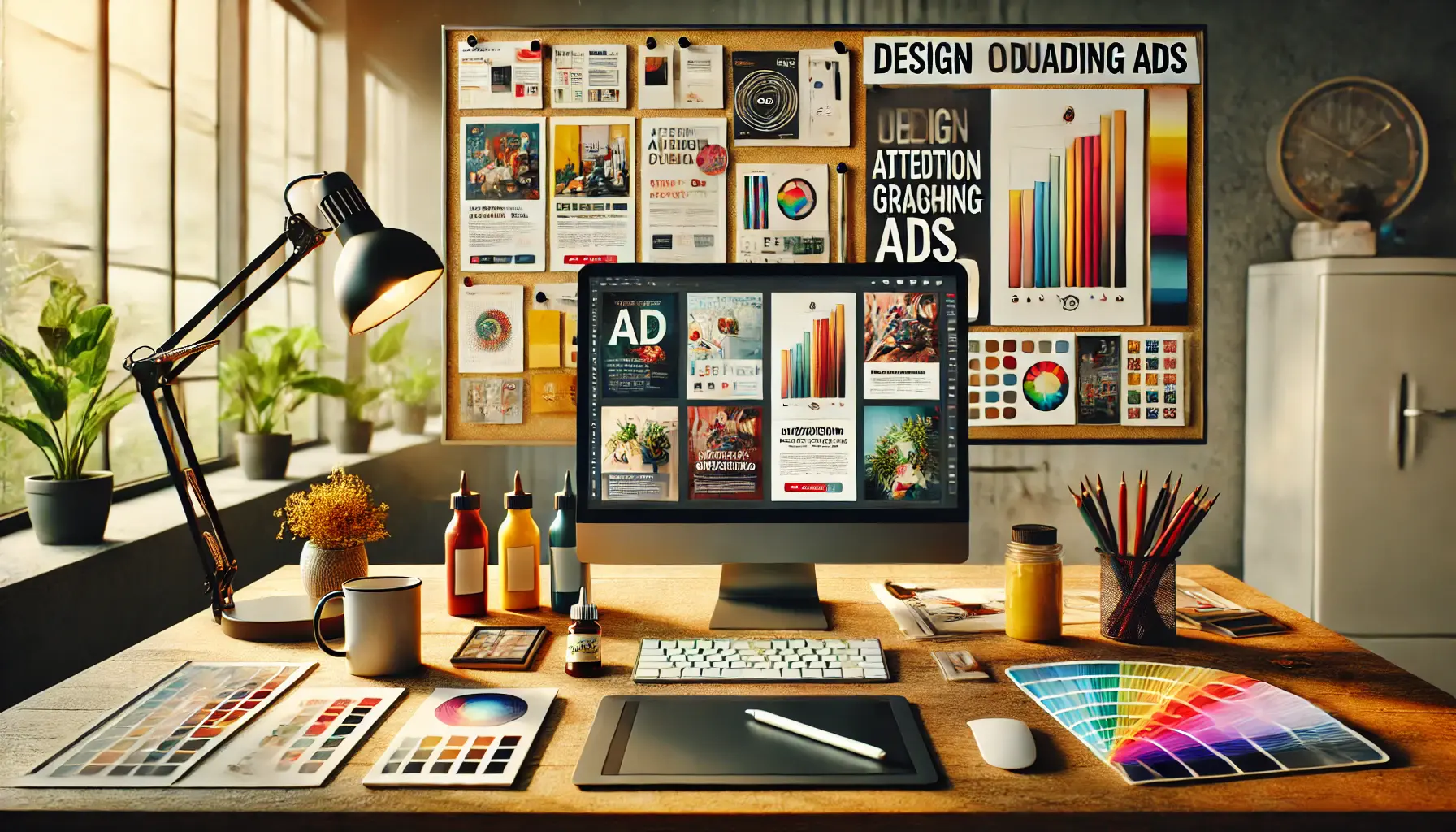
Exploring design elements for creating visually compelling and attention-grabbing ads.
Design Elements for Attention-Grabbing Ads
At the heart of every successful display ad is effective design.
To make your ad visually appealing:
- Keep it Simple: Avoid overcomplicating the design. A clean layout with ample white space ensures your message is clear and easy to digest.
- Include High-Quality Imagery: Use sharp and relevant visuals that align with your product or service. High-resolution images help convey professionalism and trustworthiness.
- Incorporate Brand Colors: Use your brand’s color palette to enhance recognition and build consistency across campaigns.
- Ensure Readable Typography: Choose fonts that are legible across devices and sizes. Avoid overly decorative fonts that may hinder readability.

Crafting impactful ad copy with clarity and purpose.
Importance of Clear and Compelling Copy
Your ad copy should be concise yet impactful.
Here’s how to make it effective:
- Craft a Strong Headline: Use attention-grabbing headlines that pique curiosity or offer solutions to problems.
- Highlight Key Benefits: Clearly state what users stand to gain. Focus on benefits rather than features.
- Include a Clear Call-to-Action (CTA): Guide users on the next step, whether it’s ‘Learn More,’ ‘Sign Up,’ or ‘Shop Now.’
- Use Persuasive Language: Employ words that evoke emotion and urgency, encouraging immediate action.
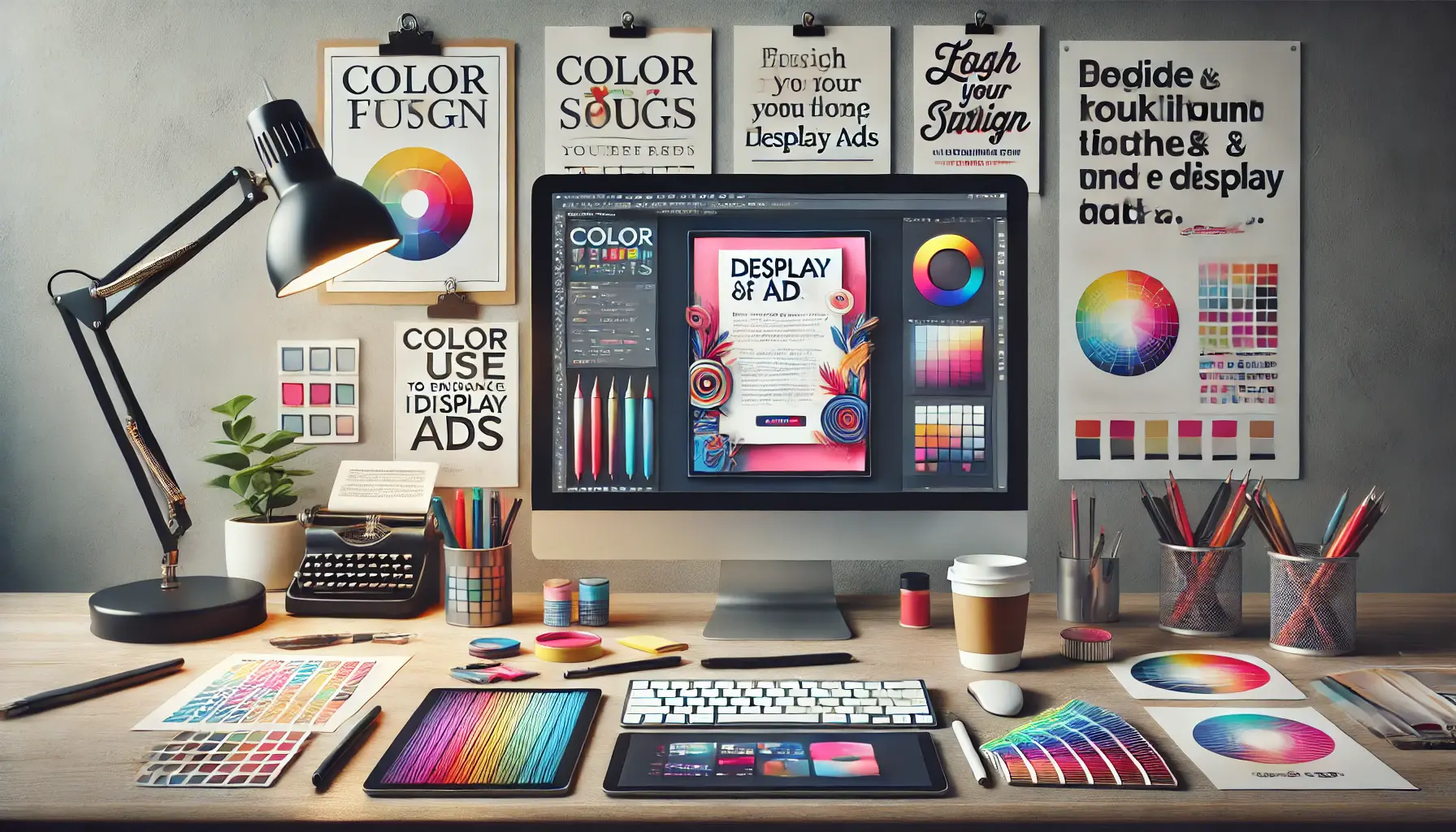
Enhancing ad readability through strategic use of colors and fonts.
Using Colors and Fonts to Enhance Readability
Colors and fonts significantly impact how your ad is perceived.
Keep these tips in mind:
- Contrasting Colors: Ensure text stands out against the background. High contrast improves readability and draws attention.
- Limit Color Palette: Stick to a cohesive color scheme to avoid overwhelming viewers.
- Use Consistent Fonts: Limit your ad to one or two fonts. Consistency enhances readability and maintains a professional appearance.
- Consider Accessibility: Choose color combinations that are accessible to all users, including those with color vision deficiencies.
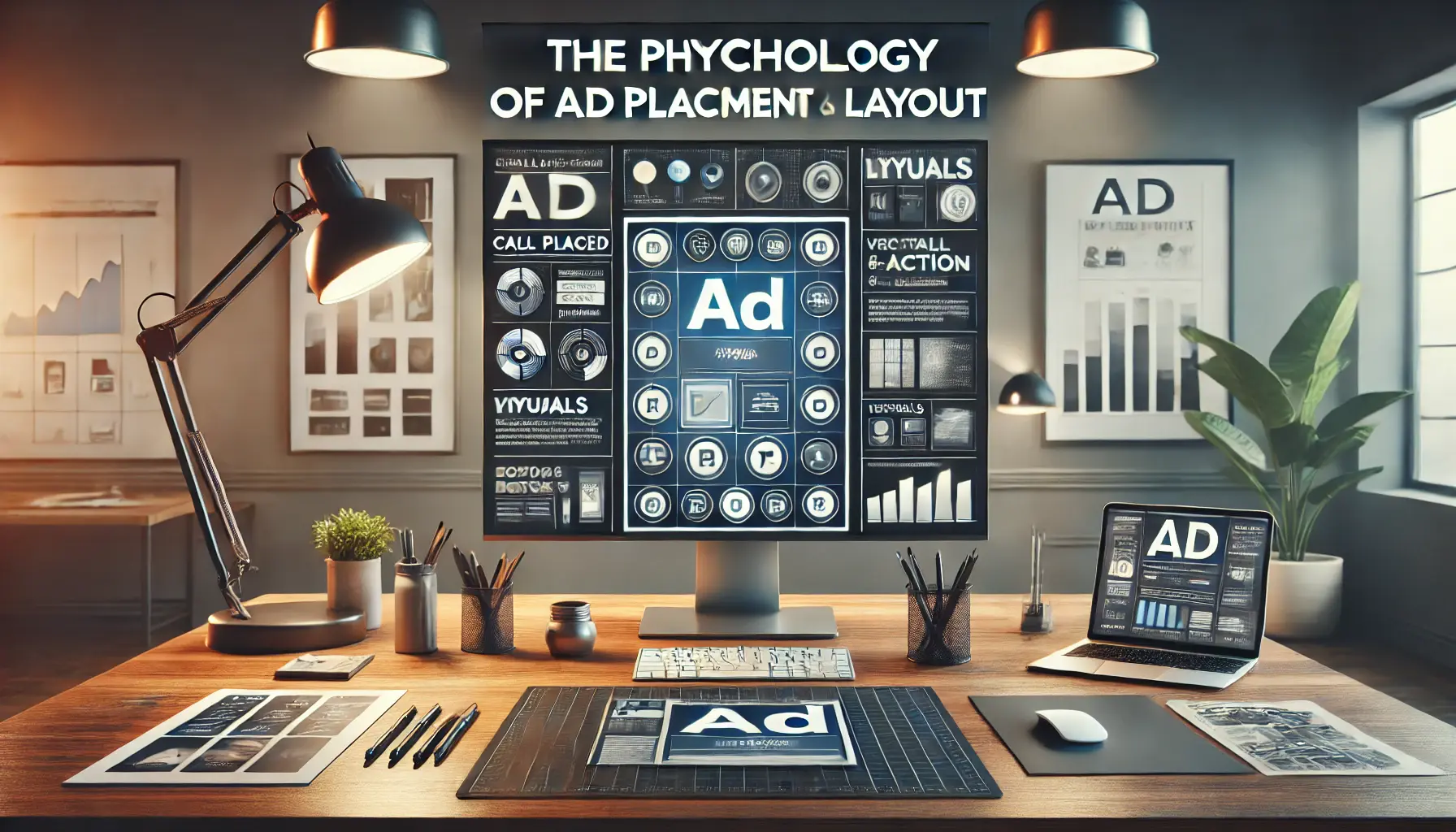
Understanding the psychology behind strategic ad placement and layout.
The Psychology of Ad Placement and Layout
Understanding how users interact with content can help you design effective ad layouts:
- Follow the F-Pattern: Users often scan content in an ‘F’ shape. Place important elements along these lines to capture attention.
- Use Visual Hierarchy: Organize elements to guide the viewer’s eye from the headline down to the CTA.
- Take Advantage of White Space: Use spacing to separate elements, making the ad less cluttered and more inviting.
- Place CTAs in Strategic Positions: Position CTAs where they are highly visible, typically at the bottom right or center of the ad.
By integrating these design principles, clear copy, thoughtful use of colors and fonts, and strategic layouts, you can create display ads that not only attract attention but also drive meaningful engagement.
Craft compelling copy with clear benefits, persuasive language, and a direct call-to-action to increase engagement.

Inspiring creativity through innovative display ad ideas.
7 Innovative Ideas to Inspire Your Display Ads
In the ever-evolving landscape of digital marketing, staying ahead requires creativity and adaptability.
To make your display ads stand out, consider incorporating these innovative ideas:

Showcasing interactive ad designs that directly engage users.
1. Interactive Ads: Engage Users Directly
Interactive ads invite users to participate actively, increasing engagement and retention.
Features like quizzes, polls, or mini-games can make your ads more memorable and encourage users to spend more time with your content.
- Quizzes: Create small quizzes about your products or services to entertain users.
- Polls: Use polls to capture opinions and involve users.
- Mini-Games: Design simple games that entertain while subtly promoting your brand.

Showcasing the art of visual storytelling in advertising.
2. Storytelling Through Visuals
Humans are naturally drawn to stories.
Crafting a narrative through your ad visuals can create an emotional connection with your audience.
Use a series of images or a short video to tell a compelling story that aligns with your brand message.
- Sequential Imagery: Use a series of images to depict a story arc.
- Short Videos: Create brief videos that convey your brand’s story or values.
- Infographics: Combine visuals and text to tell a concise, impactful story.

undefined
3. Custom Ads Targeting Viewer Interests
Personalization can significantly enhance ad performance.
Leverage data to customize your ad creative based on individual user behaviors, browsing history, or demographic profiles.
Such personalized ads make users feel special, increasing the rate of conversion.
- Dynamic Content: Adjust ad creative based on user actions or preferences.
- Location-Based Ads: Target advertisements to the user’s geographical location for greater relevance.
- Retargeting: Serve ads to users who have previously interacted with your website or app.

Utilizing video content to create impactful and dynamic advertisements.
4. Leverage Video Content to Make an Impact
Video is far more engaging than static images, making it highly effective for delivering your message.
Incorporate quick, interactive videos into your display ads to showcase product features, highlight benefits, or share customer testimonials.
- Product Demos: Show your product in action to highlight its benefits.
- Customer Testimonials: Feature satisfied customers to build trust.
- Behind-the-Scenes: Provide a glimpse into your company’s culture or processes.

undefined
5. Creative Use of Animations and Motion Graphics
Animations can draw attention and make your ads more dynamic.
Use motion graphics to illustrate complex ideas, highlight key messages, or add a touch of creativity to your ads.
- Animated Logos: Add subtle animations to your logo to make it look modern and trendy.
- Motion Infographics: Use animated charts or graphs to effectively present information.
- Transition Effects: Apply smooth transitions between ad elements to maintain viewer interest.

Incorporating seasonal and trending themes into creative advertising strategies.
6. Seasonal and Trending Themes
Timing your ad to current events, holidays, or trends makes it relevant and timely.
Use seasonal themes or timely subjects to capture your audience’s attention.
- Holiday Ads: Create ads for major holidays to align with seasonal increases in sales.
- Trendy Themes: Reference popular culture or current events that appeal to your audience.
- Limited-Time Offers: Create a sense of urgency by making certain offers time-sensitive.
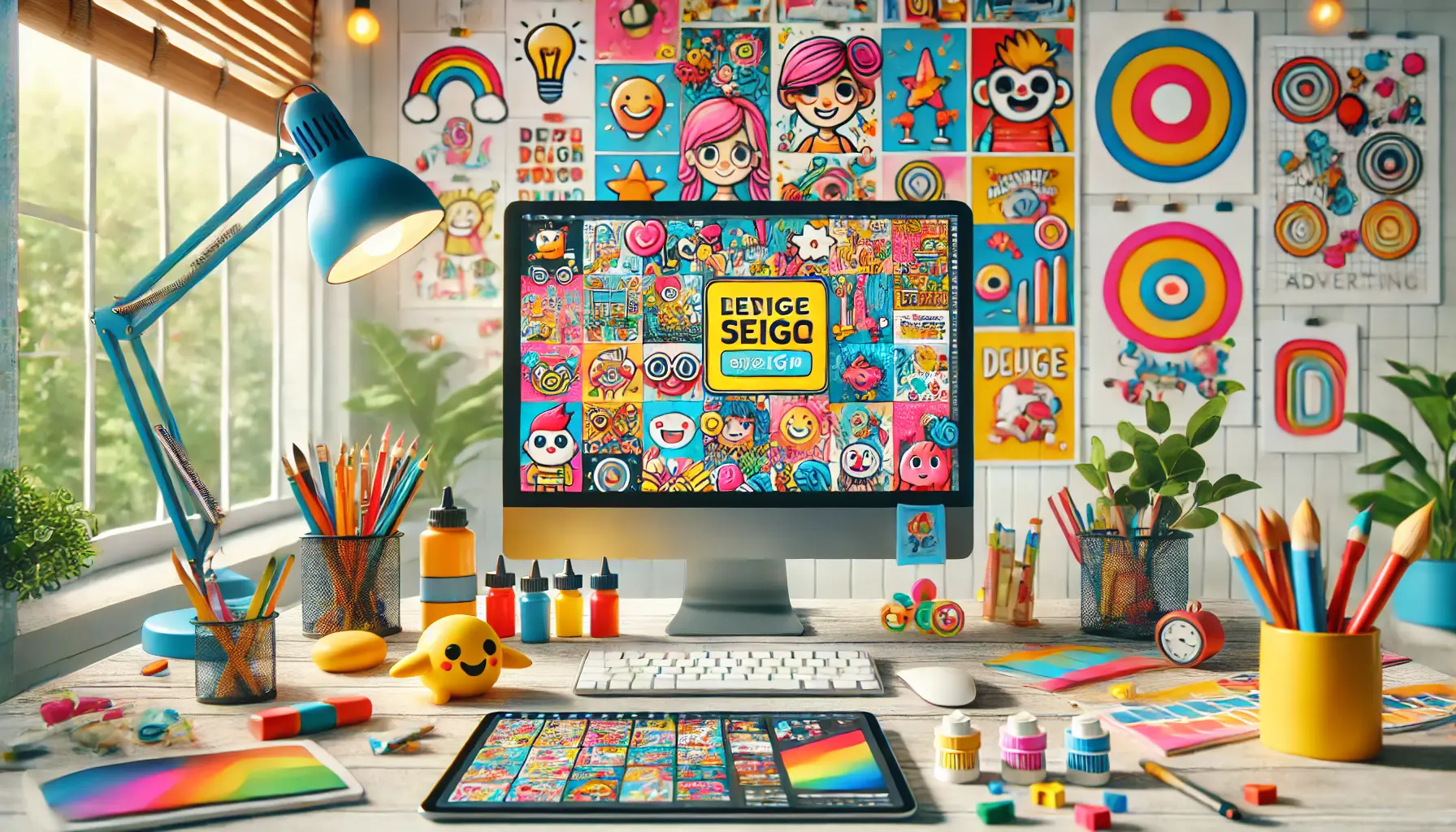
Leveraging humor and playful features to create engaging advertisements.
7. Use of Humor and Playful Features
Humor can be a powerful tool for making your advertisement memorable.
Add playful features or light-hearted content that engages your audience and links your brand to positive feelings.
- Funny Imagery: Use humorous visuals that align with your brand’s voice.
- Witty Copy: Craft clever headlines or taglines that make users smile.
- Interactive Fun: Create entertaining content that engages your audience while promoting your message.
By incorporating these creative concepts, you can design display ads that not only command attention but also connect with your audience on a deeper level, driving increased engagement and conversions.
- Interactive ads captivate users.
- Storytelling through visuals creates emotional connections.
- Personalized content boosts relevance.
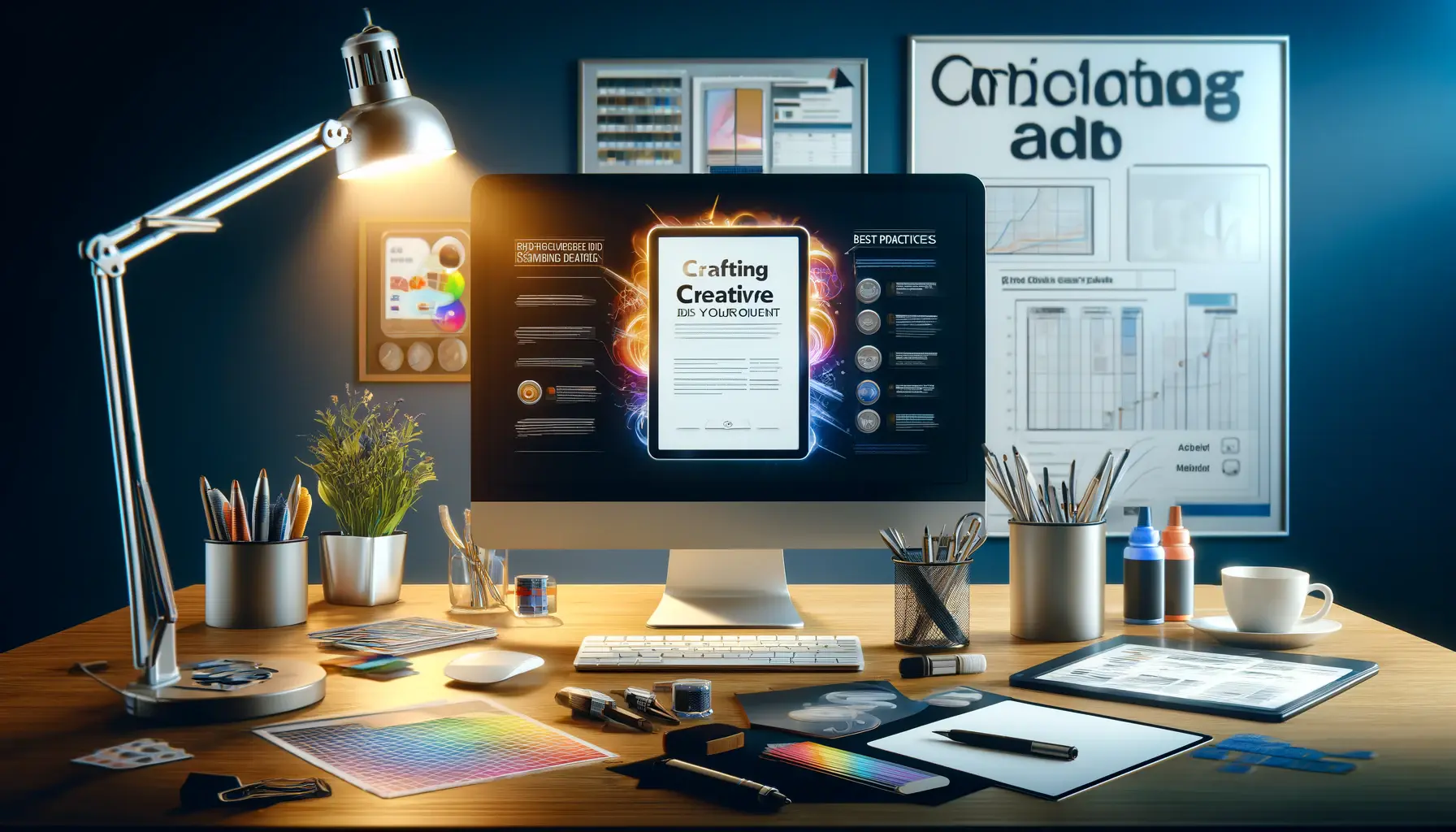
Showcasing best practices for crafting compelling and creative display ads.
Best Practices for Crafting Creative Content in Display Ads
Creating compelling display ads requires a blend of creativity and strategic planning.
By adhering to best practices, you can enhance the effectiveness of your ads and achieve better engagement with your target audience.
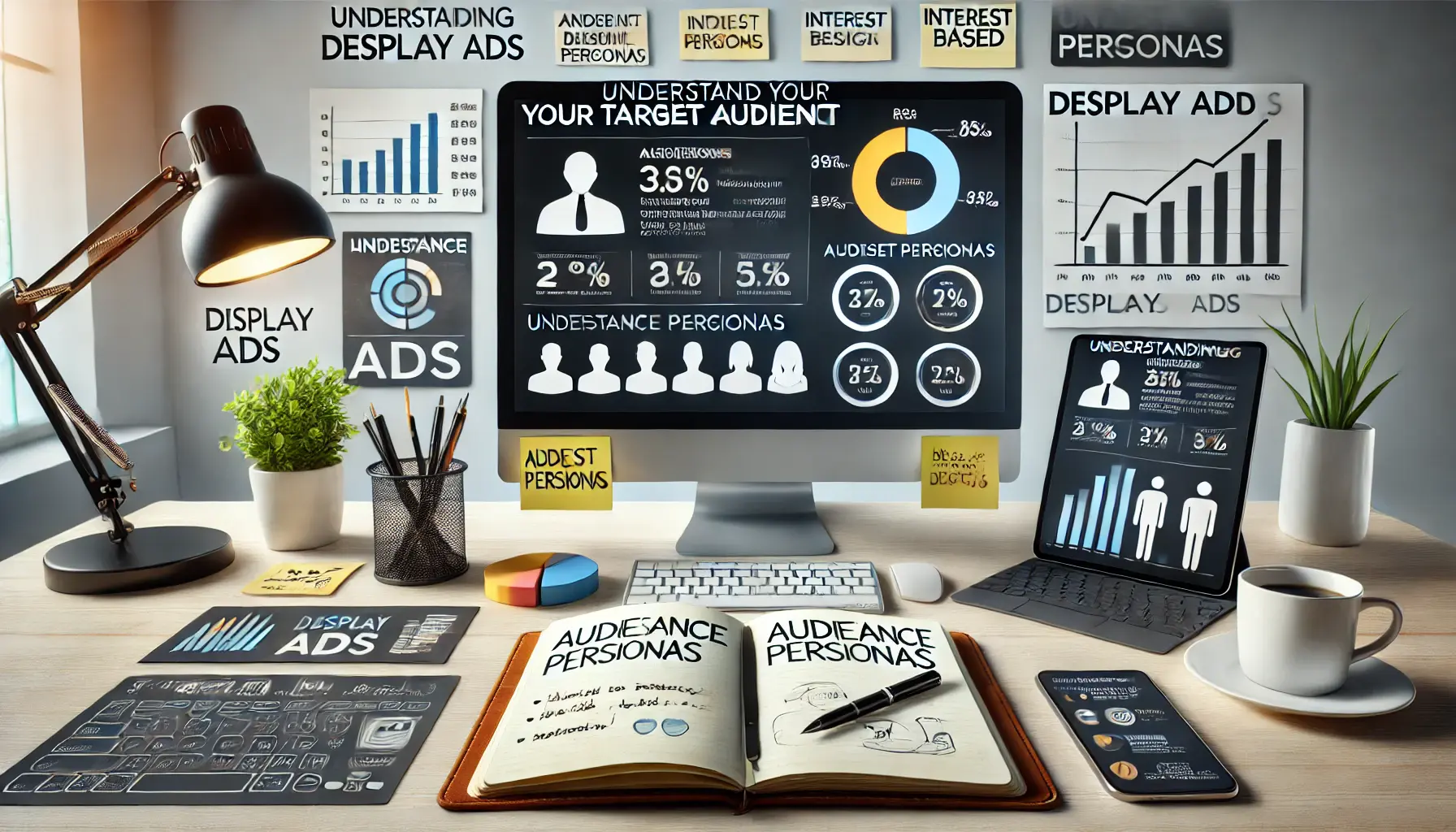
Strategically analyzing target audience data for effective display ads.
1. Understand Your Target Audience
Before you start creating your ad design, it’s crucial to thoroughly understand your target audience.
Knowing their age brackets, interests, and browsing behaviors helps you frame your creative content to resonate with them.
- Conduct Market Research: Gather insights through surveys, focus groups, or analytics about your potential audience.
- Create Buyer Personas: Develop detailed personas representing your ideal customers to guide your creative decisions.
- Analyze Competitor Ads: Study successful ads from competitors to understand what appeals to your shared audience.

Emphasizing clarity and simplicity in crafting effective ad messages.
2. Keep Your Message Clear and Concise
Display ads have limited space, so it is essential to convey your message briefly.
Focus on one clear value proposition that tells viewers what you offer and why it benefits them.
- Use Simple Words: Avoid jargon or overly complex terms; keep your language straightforward and easy to understand.
- Show Key Benefits: Highlight the primary advantages of your product or service.
- Include a Strong CTA: Guide users on the next steps, such as ‘Learn More’ or ‘Shop Now.’

Highlighting the impact of high-quality visuals in creating effective advertisements.
3. Use High-Quality Visuals
Visual elements are the first thing users notice in display ads.
High-quality images or graphics can capture attention and convey your message effectively.
- Use Relevant Imagery: Select visuals that align with your brand and message.
- Ensure High Resolution: Avoid blurry or pixelated images, as they detract from your ad’s professionalism.
- Maintain Brand Consistency: Use colors and styles that reflect your brand identity.

Optimizing ad designs for seamless cross-device compatibility.
4. Optimize for Different Devices
With users accessing content across various devices, it’s vital to ensure your ads are responsive and look great on all screen sizes.
- Design for Mobile First: Given the high mobile usage, prioritize mobile-friendly designs.
- Test Across Devices: Preview your ads on different devices to ensure consistent appearance and functionality.
- Use Scalable Graphics: Employ vector images that scale without losing quality.

Comparing ad variations through A/B testing for optimal performance.
5. A/B Test Your Ads
Testing different versions of your ads helps identify what works best with your audience.
Experiment with various elements to optimize performance.
- Test Headlines: Try different headlines to see which captures more attention.
- Experiment with CTAs: Use various call-to-action phrases to determine which drives more engagement.
- Analyze Performance Metrics: Monitor click-through rates, conversions, and other KPIs to assess effectiveness.

Adhering to platform guidelines for successful ad approvals.
6. Ensure Compliance with Platform Guidelines
Different advertising platforms have specific guidelines regarding ad content and formats.
Following these ensures your ads are approved and displayed correctly.
- Review Platform Policies: Familiarize yourself with the advertising policies of each platform you use.
- Use Correct Ad Sizes: Develop your ads in the size formats required by the platform.
- Avoid Restricted Content: Refrain from using misleading claims or inappropriate imagery that violates platform rules.
By following these best practices, you can create innovative content for your display ads that attracts the right attention and drives meaningful engagement and conversions.
- Understand your audience deeply.
- Keep messaging concise and impactful.
- Ensure visuals and designs are mobile-friendly.

Analyzing key metrics to measure the success of creative display ads.
Measuring the Success of Your Creative Content in Display Ads
Creating compelling display ads is only part of the equation; understanding their effectiveness is crucial for refining your strategies and maximizing return on investment (ROIReturn on Investment, a measure of the profitability of an investment compared to its cost.).
By implementing robust measurement techniques, you can assess how well your creative content resonates with your audience and drives desired actions.

Monitoring essential KPIs for effective advertising performance.
1. Key Performance Indicators (KPIs) to Monitor
Identifying and tracking relevant KPIs provides insights into your ad performance.
Focus on the following metrics:
- Click-Through Rate (CTR): Measures the percentage of users who click on your ad after viewing it, indicating its appeal and relevance.
- Conversion Rate: The proportion of users who complete a desired action (e.g., purchase, sign-up) after clicking your ad, reflecting its effectiveness in driving outcomes.
- ROAS (Return on Ad Spend): The ratio of revenue generated for every dollar spent on advertising, helping evaluate the financial efficiency of your campaigns.
- Cost Per Click (CPC): Refers to how much you pay each time someone clicks your ad, which factors into your overall advertising budget and ROI.
- Impressions: Indicates how many times people viewed your ad, providing context to other metrics, such as CTR and conversion rate.

Leveraging analytics tools for data-driven advertising insights.
2. Utilizing Analytics Tools
Leveraging analytics platforms aids in effective data acquisition and interpretation:
- Google Analytics: Provides valuable insights into user behavior, traffic sources, and conversion tracking, enabling detailed performance analysis.
- Platform-Specific Analytics: Use native analytics tools provided by advertising platforms (e.g., Facebook Ads Manager, LinkedIn Campaign Manager) for ad performance tracking.
- Heatmaps: Tools like Hotjar or Crazy Egg visually depict user interactions with your ads and landing pages, highlighting areas for potential improvement.

Experimenting with A/B testing to optimize ad effectiveness.
3. Conducting A/B Testing
A/B testing involves creating two versions of an ad and measuring their performance to determine which one performs better:
- Control Groups: Maintain a control version of your ad to benchmark against variations, ensuring reliable results.
- Statistical Significance: Ensure your test results are statistically significant before making decisions, avoiding changes based on random variations.

Incorporating audience feedback to refine advertising strategies.
4. Gathering Audience Feedback
Direct feedback from your audience provides qualitative insights:
- Surveys: Deploy short surveys to gather user opinions on your ads’ appeal and messaging.
- Social Media Engagement: Monitor comments, shares, and reactions to your ads on social platforms to gauge audience sentiment.
- Customer Interviews: Conduct interviews with customers to understand their perceptions and experiences at a deeper level.

undefined
5. Iterating Based on Insights
Leverage the data and feedback collected to refine your creative content:
- Identify Trends: Analyze your data for patterns that indicate what resonates with your audience.
- Optimize Underperforming Elements: Adjust or discard ad elements that do not meet performance expectations.
- Scale Successful Strategies: Increase investment in successful ad variations to maximize ROI.
By systematically measuring and analyzing the success of your creative content in display ads, you can make informed decisions that enhance engagement, drive conversions, and improve the overall effectiveness of your advertising campaigns.
Use analytics tools and A/B testingA method of comparing two versions of an ad or webpage to determine which performs better. to measure performance. Refine ads based on key metrics like CTRClick-Through Rate, a metric that measures the percentage of users who click on an ad after viewing it. and ROI.
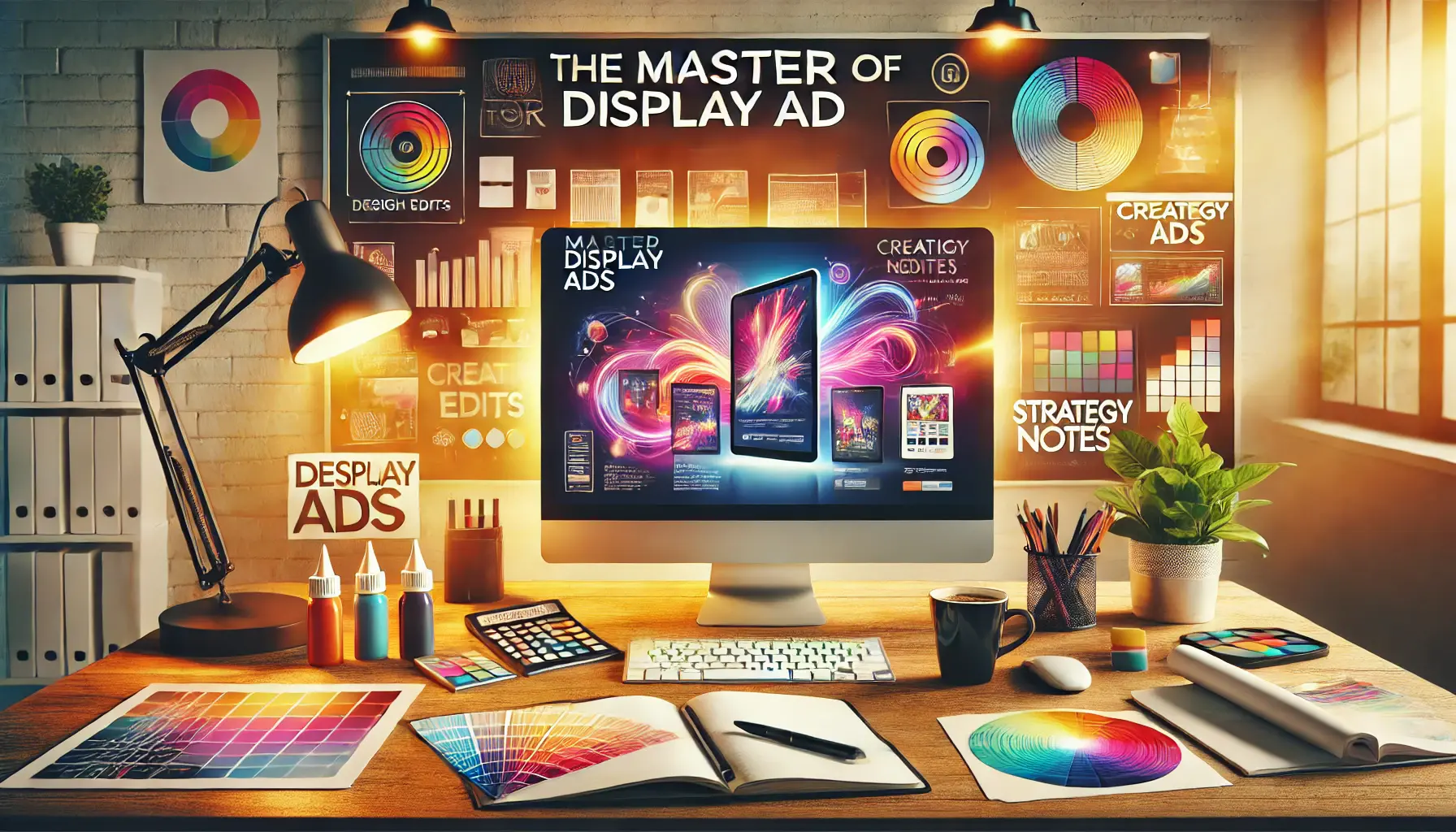
Integrating creativity and strategy to master display ad content.
Bringing It All Together: Mastering Creative Content for Display Ads
Crafting creative content for display ads is both an art and a science.
Throughout this article, we’ve explored strategies, tips, and innovative ideas to ensure your ads capture attention, resonate with audiences, and drive meaningful engagement.
Let’s summarize the key takeaways to help you create successful display ad campaigns.
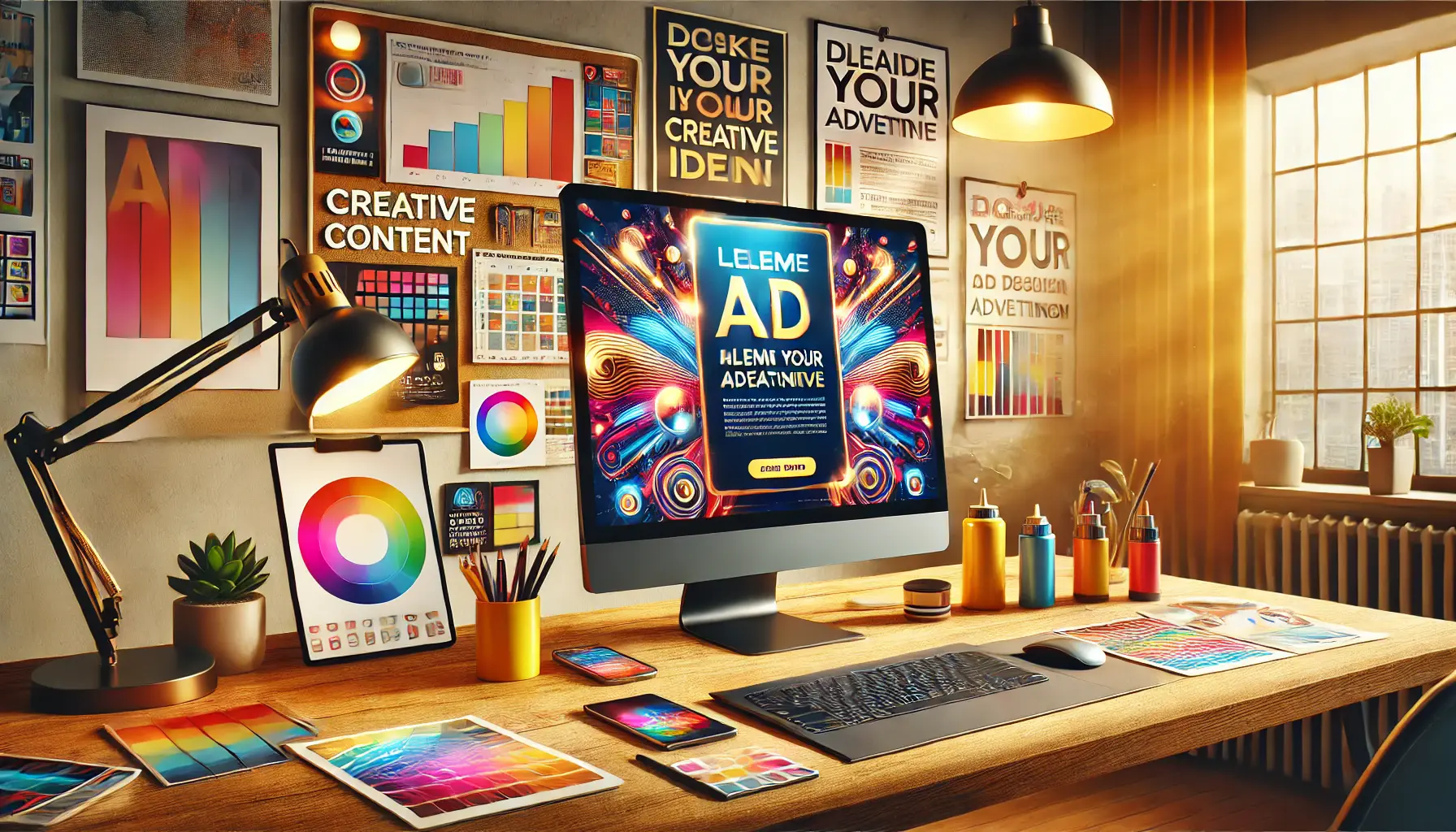
Exploring the significance of creative content in impactful advertising.
Why Creative Content Matters
Creative content is the backbone of effective display ads.
It grabs attention in a crowded digital landscape, conveys your brand message, and inspires action.
Without compelling creative content, even the most strategically placed ads may fail to achieve their objectives.

Highlighting effective strategies for success in advertising campaigns.
Key Strategies for Success
- Know Your Audience: Tailor your creative content to the needs, preferences, and behaviors of your target audience. Conduct thorough research and develop detailed buyer personas to guide your decisions.
- Design Seriously: High-quality visuals and readable typography are crucial to making your message stand out. Ensure your designs are optimized for both desktop and mobile devices.
- Keep Messaging Clear: Use concise, direct language to communicate your value proposition. Highlight key benefits and include a compelling call-to-action to guide users.

Inspiring creative innovation to elevate your advertisements.
Take Your Ad to the Next Level: Innovative Ideas
Adding innovative twists can make your ads stand out and attract attention.
Consider these ideas:
- Interactive Ads: Engage users directly with features like quizzes or polls.
- Storytelling Through Visuals: Build emotional connections by telling a story through your ad visuals.
- Personalized Ads: Cater to individual preferences and behaviors for more relevant messaging.
- Leveraging Video Content and Animations: Use dynamic, eye-catching elements to captivate your audience.
- Seasonal and Trending Themes: Align your ads with holidays or trends to increase relevance.
- Humor and Playful Elements: Make your ads memorable by incorporating lighthearted and entertaining content.

Analyzing performance metrics to refine advertising strategies.
Measuring and Improving Performance
Success doesn’t stop at creating great ads; you must also measure their performance and refine them based on insights:
- Monitor Key Metrics: Track CTR, conversion rate, impressions, CPC, and ROAS to assess your ad performance.
- Utilize Analytics Tools: Leverage platforms like Google Analytics and heatmaps to gain deeper insights into user behavior.
- A/B Test Regularly: Experiment with different ad variations to determine what resonates best with your audience.
- Gather Feedback: Use surveys and social media engagement to collect qualitative insights about your ads.
- Iterate and Scale: Optimize underperforming elements and focus on scaling successful strategies to maximize ROI.

Celebrating the completion of a successful advertising project.
Final Thoughts
Mastering the art of creative content for display ads is a continuous learning process.
By combining creativity with data-driven insights, you can craft ads that not only capture attention but also inspire action.
The success of your ads depends on how well they resonate with your audience and deliver value.
Keep testing, learning, and evolving to stay ahead in the competitive digital advertising landscape.
With these strategies and insights, you’re now equipped to craft display ads that elevate your brand, drive engagement, and achieve your marketing goals.
Embrace the power of creative content and watch your advertising efforts soar to new heights.
Combining creativity with strategic planning leads to impactful ads that drive meaningful engagement.

Answering key questions about creative content for display ads.
Your campaigns can be managed by an agency specialized in Google Ads, check out our service page.
Frequently Asked Questions About Creative Content for Display Ads
Addressing common inquiries to enhance your understanding of crafting effective display ads.
Creative content captures attention, conveys your brand message, and drives user engagement, making your display ads more effective.
Utilize creative and clear messaging along with high-quality visuals and innovative elements such as interactivity or storytelling to differentiate your ads.
Keep the designs simple, use readable fonts, maintain brand consistency, and ensure responsiveness across devices for optimal user experience.
Monitor key performance indicators such as click-through rates, conversion rates, and return on ad spend to assess effectiveness.
Understanding your target audience allows for tailored content that resonates, increasing the likelihood of engagement and conversions.
Regularly refresh your creatives to prevent ad fatigue and maintain audience interest, especially if performance metrics decline.
Yes, when aligned with your brand voice, humor can make ads more memorable and foster a positive connection with your audience.
Interactive ads engage users through elements like quizzes, polls, or games, encouraging active participation and increasing engagement.
Storytelling creates an emotional connection, making your message more relatable and memorable, thereby enhancing ad effectiveness.












